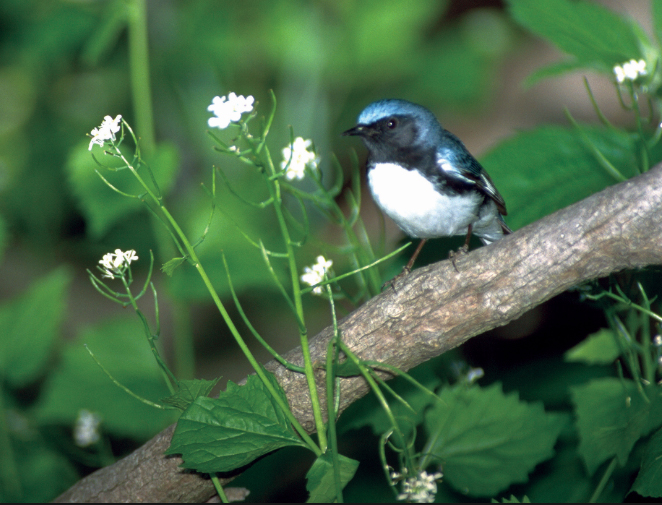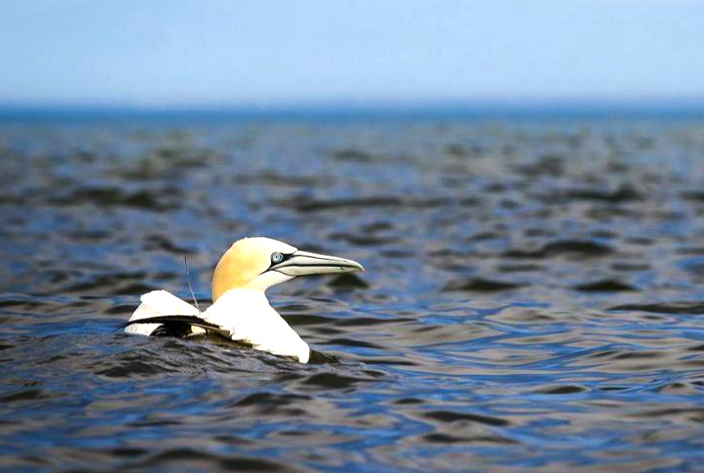Befriending Coastal Birds
The Takeaway: At a critical time for many species, NOAA collaborates with partners to protect coastal bird habitats and populations.

Try to imagine a vast, pungent saltmarsh without hearing a Song Sparrow’s sweet trilling, or a windswept beach without seeing the bright orange bill of an American Oystercatcher probing for shellfish. Organizations across the public-private spectrum are working hard to prevent that grim scenario, but the threat is real for these species and many others. That’s why NOAA’s conservation, restoration, and technical support are both timely and crucial.
More than half of the 57 shorebird species breeding in the U.S. face threats to their survival. In North America, over 75 percent of songbirds and other seed-eating birds, many of them coastal, have declined in population since the 1960s. While the causes are complex, a major culprit is loss of habitat, both to development and to damage from climate change.
NOAA takes these dangers seriously and partners with many organizations to safeguard bird habitat and populations under threat, as shown by the following stories.
Research reserves are bird havens

All told, the nation’s 30 National Estuarine Research Reserves provide nearly 1.4 million acres of estuarine habitat where birds rest during long migrations or breed, feed, and nurse their young. The research reserves expand scientists’ knowledge of avian health and provide ideal birdwatching opportunities for ecotourists, schoolchildren, and teachers.
- Alabama. A visitor to Alabama’s Weeks Bay Research Reserve might spy Brown Pelicans, Laughing Gulls, and Marsh Wrens among countless species, because this site is part of the 200-mile-long Alabama Coastal Birding Trail. Reserve perks include an interpretive center and birdwatching checklists plus a forested boardwalk and observation deck.
- California. More than 90 percent of California’s wetland habitat has been lost to development, which makes the saltmarsh at the Tijuana River Research Reserve a critical Pacific flyway and nesting spot for hundreds of migratory and native bird species. Reserve visitors enjoy four miles of trails and guided bird walks, which are bilingual for elementary- through high-school students.
- South Carolina. At the North Inlet-Winyah Bay Research Reserve, several dune and beach areas sport signs warning visitors away from protected shorebird nesting spots. These spots are monitored from April to October so that chicks can grow undisturbed and fledge. The discoveries also inform an international conservation database.

Conservation nurtures songbirds and prosperity
- Virginia. Economic studies of the state’s Eastern Shore and Lower Chickahominy Watershed show that conserving migratory songbird habitat enables birds to rest and refuel, while also delivering hundreds of millions in extra business and tax revenues. For three decades, the Virginia Coastal Zone Management Program has helped preserve thousands of these acres. Other project partners include George Mason University, Urban Analytics, and the Virginia Eastern Shore Conservation Alliance.

Data and maps keep birds safer
- Texas. A rich migratory bird habitat along Houston’s Gulf Coast is shrinking as development encroaches. Tropical storms and sea level rise bring extra habitat pressures. Houston Audubon is addressing these threats and considering conservation options, an effort that is aided by data and maps on sea level rise, marsh migration, and land cover change from NOAA’s Digital Coast. The resulting data portal enables partners to identify the greatest habitat needs and protect the habitat least vulnerable to development and climate change. The project is co-led by the Houston Advanced Research Center.
- Virginia. As the nation’s largest offshore wind energy facility gets underway, the Mid-Atlantic Ocean Data Portal informs conservation and siting decisions associated with the project. The portal also allows people to view and document the location of different species and air concerns about potential project impacts. This resource is made possible by the multi-partner Mid-Atlantic Regional Council on the Ocean and its technical team. The Virginia Coastal Zone Management Program initiated the portal in 2009 and continues to support engagement with area ocean users.
Protecting bird habitat is just one of the many benefits of conserving coastal wetland areas. Find out more at this Fast Facts page. (2022)
Partners: Bureau of Ocean Energy Management; Digital Coast; Dominion Virginia Power; George Mason University; Houston Advanced Research Center; Houston Audubon Society; Mid-Atlantic Regional Council on the Ocean; National Estuarine Research Reserve System; The Nature Conservancy; U.S. Fish and Wildlife Service; Urban Analytics; Virginia Coastal Zone Management Program; Virginia Departments of Conservation & Recreation, Game & Inland Fisheries, and Mines, Minerals, and Energy; Virginia Eastern Shore Conservation Alliance; Virginia Eastern Shore Land Trust
PRINT